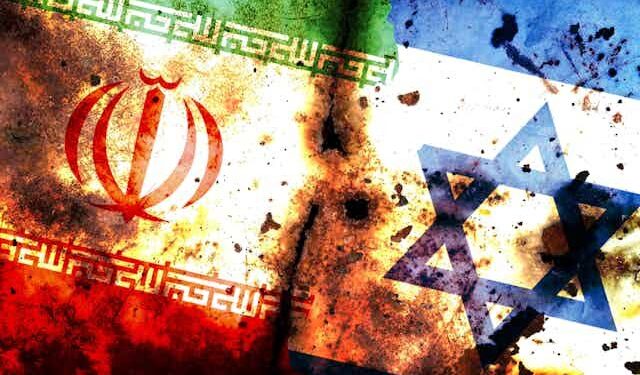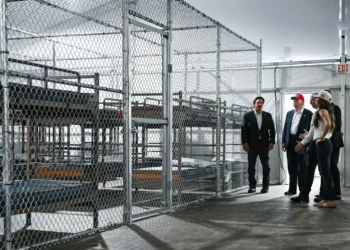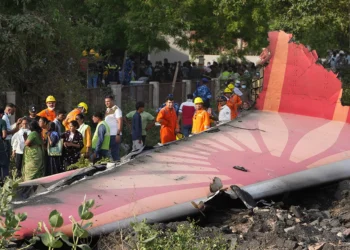A significant escalation has occurred in the Middle East as Israel launched airstrikes on Iran’s nuclear sites, targeting the heart of Iran’s nuclear program. The Israeli military confirmed that Iran has launched a counter-attack, which they are working to intercept.

The recent airstrikes have resulted in considerable damage and loss of life, sparking concerns about the potential implications for the region. The strikes targeted multiple nuclear and military installations, leading to a significant response from Iran.
Key Takeaways
- The Israeli airstrikes targeted key nuclear and military installations in Iran.
- Iran has launched a counter-attack in response to the Israeli strikes.
- The strikes have resulted in significant damage and loss of life.
- The international community is closely watching the situation for potential escalation.
- The implications of this conflict could have far-reaching effects on the Middle East and global economies.
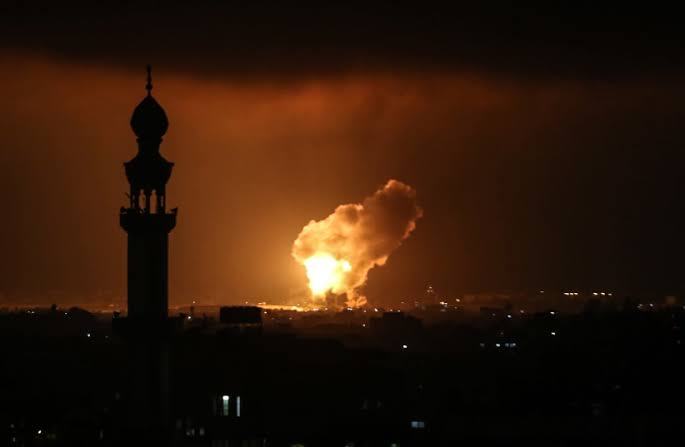


Breaking Down the Crisis: Israel Attacks Iran Tehran
Israel’s attack on Iran’s capital, Tehran, has brought the region to the brink of crisis. The airstrikes, which occurred around 03:30 local time, have resulted in significant damage and casualties. Explosions were reported in residential areas of Tehran, with additional blasts heard north-east of the city.
The Immediate Aftermath of the Strikes
The immediate aftermath of the Israeli airstrikes on Tehran has been marked by widespread destruction and a significant loss of life. Iranian state media reported that residential areas were hit, resulting in numerous casualties. The attacks have not only caused physical damage but have also heightened tensions in the region, with many fearing an escalation of the conflict.
Casualties and Damage: Reports indicate that several key facilities were targeted, leading to substantial damage. The exact number of casualties is still being assessed, but it’s clear that the impact has been severe.
Key Targets and Strategic Objectives
The Israeli airstrikes on Tehran were precision-targeted, focusing on key military and nuclear facilities. The strategic objectives behind these strikes appear to be aimed at crippling Iran’s nuclear capabilities and disrupting its military command structure. By targeting these areas, Israel has demonstrated its capability to strike at the heart of Iran’s military infrastructure.
Strategic Implications: The attack signifies a significant escalation in the conflict between Israel and Iran. The international community is closely watching the developments, with many countries calling for restraint and diplomatic resolution.
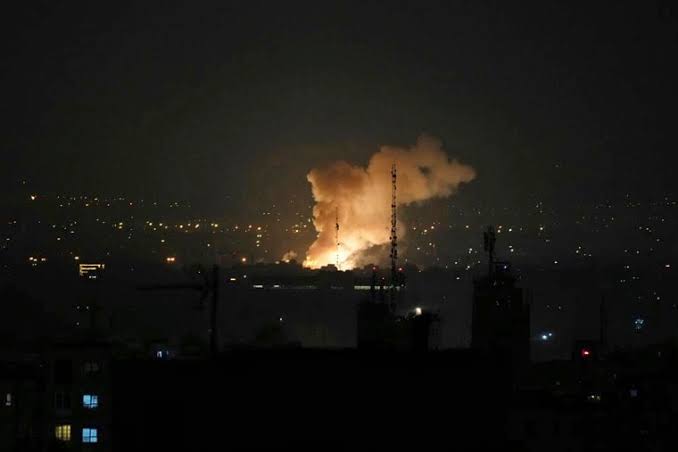
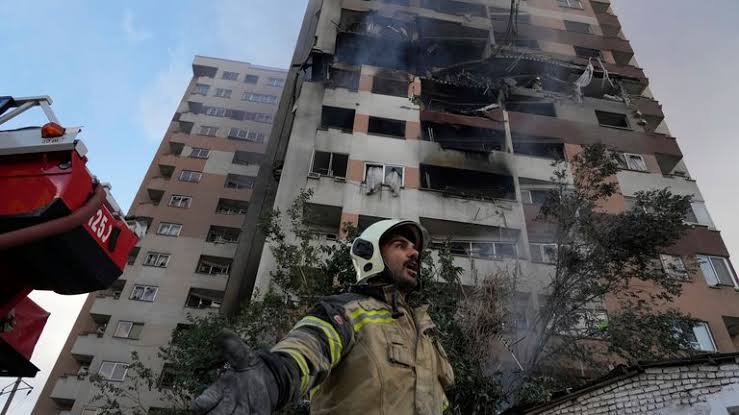
Timeline: How Israel’s Attack on Iran Unfolded
A detailed timeline of Israel’s strikes on Iran reveals a strategic and coordinated effort. The operation, which targeted key nuclear sites across the country, was carried out in multiple waves.
First Wave: Precision Strikes on Natanz (0100-0300 GMT)
The initial wave of attacks focused on the Natanz nuclear facility, approximately 225km south of Tehran. Reports indicate that precision-guided munitions were used to strike the enrichment facility. The Natanz site is crucial for Iran’s nuclear program, housing centrifuges for uranium enrichment.

Second Wave: Targeting Fordow and Isfahan (0400-0600 GMT)
Following the initial strikes on Natanz, a second wave of attacks targeted the Fordow underground nuclear site and facilities in Isfahan. Fordow is known for its heavily fortified underground bunkers, making it a challenging target. The strikes on these locations suggest a significant disruption to Iran’s nuclear capabilities.
The Isfahan region is also home to various military and nuclear research facilities, indicating that the strikes were aimed at degrading Iran’s overall nuclear infrastructure.
Command Center Strikes in Tehran (0700-0900 GMT)
The final wave of attacks focused on command centers in Tehran, targeting the military leadership and communication infrastructure. This phase of the operation likely aimed to disrupt Iran’s ability to respond effectively to the strikes.
By hitting key command centers, Israel demonstrated its capability to penetrate deep into Iranian territory and strike at the heart of its military command structure.
The timeline of Israel’s attack on Iran highlights the complexity and sophistication of the operation. By targeting multiple sites across the country, Israel demonstrated its ability to launch a coordinated and effective military campaign against Iran’s nuclear infrastructure.
Target Assessment: Iran’s Nuclear Infrastructure Damage
The international community is closely watching the situation as reports emerge of the extensive damage to Iran’s nuclear capabilities. The recent Israeli strikes have targeted key nuclear facilities, raising questions about the long-term implications for Iran’s nuclear program.

Natanz Enrichment Facility Status
The Natanz enrichment facility, a crucial component of Iran’s nuclear infrastructure, has been significantly impacted. The International Atomic Energy Agency (IAEA) has confirmed that the facility was attacked, resulting in substantial damage to its enrichment capabilities. The extent of the damage is still being assessed, but initial reports indicate a significant setback for Iran’s nuclear enrichment activities.
Impact on Fordow Underground Site
The Fordow underground site, known for its hardened facilities, has also been targeted. While the exact damage is still being evaluated, preliminary assessments suggest that the site’s functionality has been compromised. The Fordow facility is critical for Iran’s covert nuclear activities, and any damage here could significantly hinder Iran’s nuclear ambitions.
Damage to Research Facilities in Tehran
Research facilities in Tehran, vital for Iran’s nuclear research and development, have been affected by the strikes. The damage to these facilities could delay Iran’s nuclear program by limiting its ability to conduct research and develop new technologies.
| Facility | Status | Impact |
|---|---|---|
| Natanz Enrichment Facility | Significantly damaged | Setback for enrichment activities |
| Fordow Underground Site | Functionality compromised | Hindered covert nuclear activities |
| Tehran Research Facilities | Damaged | Delayed nuclear research and development |
Why Did Israel Attack Iran: Strategic and Security Motivations
Prime Minister Benjamin Netanyahu’s government has justified the attack on Iran by citing critical security threats, but the details behind this decision remain complex. The Israeli military operation against Iran’s nuclear sites has sparked a global debate, with many questioning the strategic and security motivations behind this significant action.

Intelligence Assessment of Imminent Threats
Israeli intelligence agencies assessed that Iran posed an imminent threat to national security, primarily due to advancements in its nuclear program. Evidence suggested that Iran was rapidly closing in on nuclear capability, which Israel perceived as an existential threat. This assessment was critical in shaping Netanyahu’s decision to act preemptively.
Nuclear Program Red Lines Crossed
Iran’s nuclear program has been a contentious issue, with Israel consistently arguing that it poses a significant threat. The recent attacks targeted key facilities, including those at Natanz and Fordow, which were seen as crucial to Iran’s nuclear ambitions. Israel viewed Iran’s continued enrichment activities as crossing a red line, necessitating a military response.

Netanyahu’s Decision-Making Process
Netanyahu’s decision to attack was likely influenced by a combination of factors, including intelligence reports, diplomatic isolation of Iran, and internal political considerations. The Israeli Prime Minister has a history of taking decisive action against perceived threats, and the recent operation aligns with this pattern. The decision-making process involved weighing the potential benefits of a strike against the risks of escalation.
The strategic and security motivations behind Israel’s attack on Iran are multifaceted, driven by a complex interplay of intelligence assessments, concerns over Iran’s nuclear program, and Netanyahu’s leadership style. Understanding these factors is crucial to grasping the broader implications of this conflict.
IRGC Leadership Casualties: General Hossein Salami and Top Commanders
Iran’s military leadership suffered a severe blow as General Hossein Salami and other top commanders were reported dead following the Israeli airstrikes. The strikes have sent shockwaves through the Islamic Revolutionary Guard Corps (IRGC), raising questions about the future leadership and operational capabilities of this powerful military force.
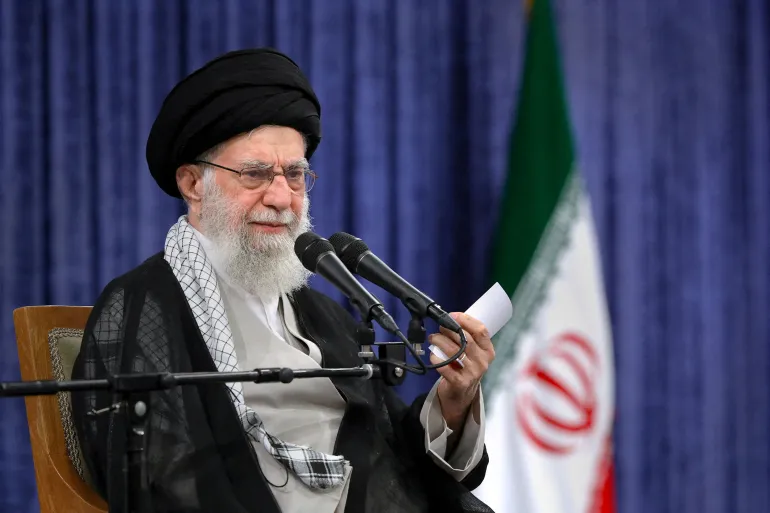
Confirmed Status of IRGC Chief Salami
General Hossein Salami, the commander-in-chief of the IRGC, was confirmed dead by Iranian state media. Salami was a key figure in Iran’s military establishment, known for his strategic role in shaping the IRGC’s operational doctrines. His death marks a significant loss for Iran’s military leadership.
Other Senior Military Leaders Killed
In addition to General Salami, other senior military leaders were also reported killed in the strikes. These include Gholamali Rashid, a high-ranking military officer, and Mohammad Bagheri, another key figure in Iran’s military command structure. The loss of these leaders is expected to disrupt the IRGC’s command and control capabilities.
Command Structure Disruption Analysis
The impact of these leadership casualties on the IRGC’s command structure is significant. The loss of top commanders like General Salami and others will likely create a power vacuum and disrupt the operational planning and execution capabilities of the IRGC. This disruption could potentially weaken Iran’s military response capabilities in the short term.
| Leader | Position | Status |
|---|---|---|
| General Hossein Salami | Commander-in-Chief, IRGC | Confirmed Dead |
| Gholamali Rashid | High-Ranking Military Officer | Reported Dead |
| Mohammad Bagheri | Senior Military Commander | Reported Dead |
Iran’s Response So Far: Counterattacks and Statements
Iran’s response to the Israeli attack has been multifaceted, involving both military countermeasures and public statements. The Iranian government has taken significant steps to address the situation, demonstrating its commitment to retaliating against the Israeli airstrikes.
Drone and Missile Launches Against Israel
In a show of military strength, Iran launched around 100 drones towards Israel, which the Israeli military worked to intercept. This act of retaliation signifies Iran’s capability and willingness to counterattack when its sovereignty is threatened. The drone launches were part of a broader strategy that included missile strikes, showcasing Iran’s diverse military capabilities.

Supreme Leader Khamenei’s Public Declarations
Supreme Leader Ayatollah Ali Khamenei played a crucial role in shaping Iran’s response, stating that “the armed forces will certainly respond to this Zionist attack.” Khamenei’s public declarations served to galvanize the Iranian public and military, reaffirming the country’s stance against Israeli actions. His statements underscored the gravity of the situation and the determination of the Iranian leadership to take further action if necessary.
Military Mobilization and Alert Status
In addition to the drone and missile launches, Iran has undertaken significant military mobilization efforts. The country’s armed forces have been placed on high alert, signaling readiness for potential further escalations. This mobilization is a clear indication of Iran’s preparedness to defend its territory and interests against any ongoing or future threats from Israel.
The combination of military action and public declarations by Iran’s leadership highlights the complexity of its response. By employing both overt and covert measures, Iran aims to demonstrate its resolve and capability in the face of Israeli aggression.
United States Reaction: Diplomatic and Military Positioning
Following Israel’s military strikes against Iran’s nuclear facilities, the United States has prioritized protecting its regional interests while avoiding escalation.
White House Official Statements
The White House has released statements indicating that the US was not involved in the Israeli airstrikes and did not provide any assistance. US Secretary of State Marco Rubio emphasized that the US is working to protect American forces in the region.
Pentagon Force Posture Changes
The Pentagon has adjusted its force posture in response to the escalating situation. This includes placing additional assets on alert and redeploying certain military units to enhance regional security.
US Diplomatic Initiatives
The US is actively pursuing diplomatic initiatives to de-escalate tensions. This includes engaging with regional allies, working with international partners to stabilize the situation, and exploring avenues for negotiations to prevent further conflict.
The US response reflects a delicate balancing act between supporting its ally Israel, managing the risk of escalation, and protecting its own regional interests.
Global Powers Respond: UN, NATO, China, Russia, and India
The recent strikes by Israel on Iran’s nuclear sites have prompted a strong response from global powers. The international community is closely watching the developments, as the conflict has significant implications for global security and stability.
United Nations Security Council Emergency Session
The UN Security Council held an emergency session to address the escalating tensions between Israel and Iran. The session was marked by intense debate among member states, with some calling for restraint and others condemning Israel’s actions.
Australia’s Foreign Minister Penny Wong expressed concern, stating that the strikes risked “further destabilising a region that is already volatile.” The UN Security Council’s response has been crucial in setting the tone for international reactions.
NATO’s Collective Response
NATO has issued a statement calling for calm and urging both parties to avoid further escalation. The alliance is monitoring the situation closely, given the potential implications for regional security.
Positions from China, Russia, and India
China, Russia, and India have all issued statements responding to the conflict. China has called for restraint from both Israel and Iran, emphasizing the need for diplomatic solutions. Russia has condemned Israel’s actions, while India has urged calm and restraint.
| Country | Response |
|---|---|
| China | Called for restraint, emphasized diplomatic solutions |
| Russia | Condemned Israel’s actions |
| India | Urged calm and restraint |
The responses from these global powers highlight the complexity of the issue and the diverse perspectives on how to address the conflict. As the situation continues to unfold, the international community remains vigilant, awaiting further developments.

Regional Fallout: How Middle Eastern Nations Are Reacting
The Israeli airstrikes on Iran have sent shockwaves throughout the Middle East, prompting varied reactions from regional nations. The conflict has significant implications for the geopolitical landscape of the region.
Saudi Arabia and Gulf States’ Positions
Saudi Arabia and other Gulf states have adopted a cautious stance, publicly condemning the escalation while privately supporting Israel’s actions against Iran’s nuclear program. Their primary concern is the potential for the conflict to spill over into their territories.
Turkey and Egypt’s Diplomatic Efforts
Turkey and Egypt are engaging in diplomatic efforts to de-escalate the situation. Turkish officials have called for restraint from both parties, while Egypt is working closely with other regional actors to prevent further escalation.
Lebanon and Syria: Proxy Conflict Concerns
Lebanon and Syria are concerned about the potential for proxy conflicts, given their historical involvement in regional conflicts. The presence of Iranian-backed militias in these countries raises tensions.
| Country | Reaction |
|---|---|
| Saudi Arabia | Cautious stance, private support for Israel |
| Turkey | Diplomatic efforts for de-escalation |
| Egypt | Collaboration with regional actors to prevent escalation |
Economic Shockwaves: Oil Prices Surge Amid Middle East Uncertainty
The Israeli airstrikes on Iran’s nuclear sites have sent shockwaves through the global economy, particularly in the energy sector. The immediate aftermath saw a significant surge in crude oil prices, with Brent crude rising more than 10 percent.

Crude Oil Price Movements
The price of Brent crude remained below eighty dollars per barrel following the initial shock. This volatility is not unexpected given the geopolitical tensions between Israel and Iran.
| Commodity | Pre-Strike Price | Post-Strike Price | Change |
|---|---|---|---|
| Brent Crude | $75 | $82 | +9.3% |
| WTI Crude | $70 | $78 | +11.4% |
Energy Market Volatility Analysis
The energy market is experiencing heightened volatility due to the uncertainty surrounding the conflict. As Mark Mobius, a renowned investment expert, noted, “The situation in the Middle East is a major concern for investors, and the energy sector is particularly vulnerable.”
“The escalation between Israel and Iran has significant implications for global energy security and economic stability.”
Long-term Supply Chain Implications
The long-term implications for supply chains are substantial. Companies reliant on stable energy supplies may need to reassess their risk management strategies. The potential for future disruptions in oil production and transportation could lead to increased costs and decreased economic efficiency.
As the situation continues to unfold, monitoring the developments in the energy market will be crucial for understanding the full extent of the economic shockwaves.
Global Financial Markets React: Stock Futures and Investment Shifts
The Israeli airstrikes on Iran have sent shockwaves through global financial markets, triggering a significant reaction across various asset classes. As investors and analysts assess the implications of this escalating conflict, market volatility is expected to continue.
Major Index Performances
Major stock indices have experienced notable fluctuations in response to the news. For instance, S&P 500 futures initially dropped by 1.5% before recovering some losses. Similarly, European indices like the FTSE 100 and DAX saw declines, reflecting investor concerns about the potential for broader conflict.
Defense Sector Stock Movements
The defense sector has seen a surge in stock prices as investors seek to capitalize on the heightened geopolitical tensions. Companies like Lockheed Martin and BAE Systems have seen their stock prices rise, driven by expectations of increased defense spending by governments worldwide.
Safe Haven Assets and Currency Impacts
Investors are flocking to safe-haven assets such as gold and U.S. Treasury bonds, driving up their prices. The Japanese yen and Swiss franc have also strengthened against the U.S. dollar, as investors seek safe currencies amid the uncertainty.
As the situation continues to unfold, global financial markets are likely to remain volatile, with investors closely monitoring developments for further signs of escalation or de-escalation.
Iran’s Nuclear Program: Before and After the Strikes
Before the Israeli airstrikes, Iran’s nuclear program was advancing rapidly, with significant enrichment capabilities. The International Atomic Energy Agency (IAEA) had reported that Iran had enriched uranium to 60% purity, enough near weapons-grade uranium to make nine nuclear bombs.
Pre-Strike Enrichment Capabilities
Iran’s pre-strike enrichment capabilities were substantial, with thousands of centrifuges operating at its Natanz and Fordow facilities. The IAEA had been monitoring these sites closely, reporting on the increasing levels of uranium enrichment.
Estimated Setbacks to Nuclear Timeline
The airstrikes are estimated to have set back Iran’s nuclear timeline significantly. Experts believe that the damage to key facilities could delay Iran’s nuclear ambitions by several years. A detailed analysis of the impact is provided in the following table:
| Facility | Damage Assessment | Estimated Delay |
|---|---|---|
| Natanz | Significant damage to centrifuge facilities | 2-3 years |
| Fordow | Partial destruction of enrichment halls | 1-2 years |
Potential for Covert Continuation
Despite the setbacks, there is concern that Iran may attempt to continue its nuclear program covertly. As
“The Iranian nuclear program is not just about the facilities; it’s about the knowledge and expertise that has been developed over the years.”
said by an expert, highlighting the challenges in completely halting Iran’s nuclear ambitions.

Expert Analysis: Could This Trigger a Wider Regional War?
In the wake of Israel’s attack on Iran’s nuclear infrastructure, international experts are cautioning about the risks of a wider regional conflict. The situation remains volatile, with various factors at play that could either escalate or de-escalate the tensions.
Military Escalation Scenarios
Experts warn that Israel’s actions could trigger a significant military response from Iran, potentially drawing in other regional actors. Military escalation scenarios include:
- Direct confrontation between Israel and Iran
- Involvement of other regional military powers
- Activation of proxy forces across the Middle East
According to General James Mattis, former US Secretary of Defense, “The risk of miscalculation is high, and the consequences could be catastrophic.”
Proxy Conflict Activation Risks
The activation of proxy conflicts is a significant concern. Proxy forces backed by Iran, such as Hezbollah in Lebanon and various militias in Iraq and Syria, could be mobilized against Israel and its allies.
“The potential for proxy wars to escalate into a broader regional conflict is a grave concern,” said Dr. Noura Erakat, a human rights attorney and professor. “The international community must act swiftly to prevent further destabilization.”
Diplomatic Off-Ramps Available
Despite the heightened tensions, there are diplomatic off-ramps that could be explored to de-escalate the situation. These include:
| Diplomatic Channel | Description | Potential Impact |
|---|---|---|
| US-Iran Dialogue | Direct negotiations between the US and Iran to address nuclear concerns | High |
| European Union Mediation | EU-led efforts to broker a ceasefire and restart nuclear talks | Moderate |
| Regional Security Talks | Multilateral discussions involving Middle Eastern countries to address security concerns | Moderate |
As the situation continues to evolve, the international community remains on high alert, watching for any signs of further escalation or diplomatic breakthroughs.

Historical Context: Israel-Iran Conflict Evolution
Understanding the historical context of the Israel-Iran conflict is crucial for grasping the current situation. The conflict has deep roots, with various factors contributing to the tensions between the two nations.
Previous Covert Operations Against Nuclear Program
Israel has previously conducted covert operations against Iran’s nuclear program. These operations have been a significant aspect of Israel’s strategy to prevent Iran from developing nuclear weapons. “The Stuxnet worm, discovered in 2010, was a notable example of such operations, targeting Iran’s nuclear infrastructure.” Such actions demonstrate Israel’s commitment to preventing Iranian nuclear proliferation.
Shifting Power Dynamics Since 2020
Since 2020, there has been a significant shift in power dynamics in the Middle East. The conflict between Israel and Iran has been influenced by changing regional alliances and the impact of global politics. The re-imposition of US sanctions on Iran and the normalization of relations between Israel and some Arab states have altered the regional landscape.
Comparison to Previous Regional Conflicts
The Israel-Iran conflict can be compared to previous regional conflicts in the Middle East. Historical conflicts, such as the Iran-Iraq War, have had lasting impacts on the region.
“The current conflict is part of a broader pattern of regional rivalries and power struggles.”
Understanding these historical precedents can provide valuable insights into the current situation.

Live Updates: Following the Iran Attack Developments
Staying informed about the Israel-Iran conflict is easier with the right sources for live updates. As the situation continues to evolve, it’s crucial to rely on verified information to understand the crisis fully.
Verified Information Sources
For accurate and timely updates, consider the following sources:
- Reputable News Agencies: Agencies like Reuters, AP, and BBC provide comprehensive coverage.
- Official Government Statements: Statements from the Israeli and Iranian governments offer direct insights.
- Specialized Geopolitical Analysis: Analysts and experts on Middle East affairs provide in-depth analysis.
Military and Diplomatic Updates
Military and diplomatic developments are critical aspects of the conflict. Key updates include:
| Category | Description | Source |
|---|---|---|
| Military Strikes | Details on the targets and impact of military strikes. | Defense News |
| Diplomatic Efforts | Updates on international diplomatic responses and negotiations. | State Department |
How to Stay Informed
To stay updated, follow these tips:
- Subscribe to News Alerts: Get real-time updates from your preferred news sources.
- Follow Reliable Analysts: Experts on social media and news platforms provide valuable insights.
- Check Official Websites: Regularly visit the official websites of involved governments and organizations.

By following these guidelines, you can stay well-informed about the developments in the Israel-Iran conflict.
Conclusion: What’s Next for the Middle East and Global Security
The Israeli airstrikes on Iran’s nuclear sites have significantly escalated tensions in the Middle East, raising concerns about global security. The strikes, which targeted key nuclear facilities, have disrupted Iran’s nuclear program, but the response from Iran and the international community remains uncertain.
The aftermath of the strikes has seen a surge in oil prices and volatility in global financial markets. The United States and other global powers are navigating the crisis through diplomatic efforts and military positioning. The situation remains fluid, with potential for further escalation.
As the Middle East navigates this complex and volatile situation, the global community must remain vigilant. The implications of the Israeli airstrikes on Iran extend beyond the region, affecting global security and economic stability. A peaceful resolution will require careful diplomacy and cooperation among nations.
The coming days and weeks will be crucial in determining the trajectory of the conflict and its impact on the Middle East and global security. Staying informed through verified sources will be essential in understanding the developments and potential outcomes of this unfolding crisis.
FAQ
Why did Israel attack Iran’s nuclear sites?
Israel attacked Iran’s nuclear sites due to strategic and security motivations, including intelligence assessments that Iran posed an imminent threat and had crossed red lines with its nuclear program.
What were the key targets of the Israeli airstrikes on Iran?
The key targets included the Natanz enrichment facility, the Fordow underground site, and research facilities in Tehran, which were significantly damaged in the strikes.
How did Iran respond to the Israeli airstrikes?
Iran responded with drone and missile launches against Israel, public declarations by Supreme Leader Khamenei, and military mobilization and alert status.
What was the impact of the Israeli airstrikes on Iran’s nuclear program?
The airstrikes resulted in significant setbacks to Iran’s nuclear timeline, damaging its enrichment capabilities and research facilities.
How did the US react to the Israeli airstrikes on Iran?
The US reacted with official statements from the White House, changes in the Pentagon’s force posture, and diplomatic initiatives to address the escalating conflict.
What were the global reactions to the Israeli airstrikes on Iran?
Global powers, including the UN Security Council, NATO, China, Russia, and India, responded with emergency sessions, collective responses, and varied positions on the conflict.
How did the Israeli airstrikes affect global financial markets?
The airstrikes led to significant movements in major indices, defense sector stocks, and safe-haven assets, reflecting the uncertainty and volatility in the global economy.
What are the potential implications of the Israeli airstrikes on Iran for the Middle East and global security?
The airstrikes have raised concerns about a wider regional war, proxy conflict activation, and the need for diplomatic off-ramps to mitigate the escalating tensions.
What is the current status of General Hossein Salami, the IRGC chief?
The confirmed status of General Hossein Salami is that he was among the IRGC leadership casualties resulting from the Israeli airstrikes, impacting the IRGC’s command structure.
How can one stay informed about the developments in the Iran-Israel conflict?
Verified information sources, military and diplomatic updates, and following reputable news outlets can help individuals stay informed about the conflict.
What are the historical contexts that led to the Israel-Iran conflict?
Previous covert operations against Iran’s nuclear program, shifting power dynamics since 2020, and comparisons to previous regional conflicts provide context to the Israel-Iran conflict.
Did Israel have nuclear weapons when it attacked Iran?
The question of whether Israel has nuclear weapons is a matter of public knowledge, with Israel being known to possess nuclear capabilities, though it maintains ambiguity about its nuclear arsenal.
































